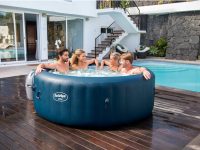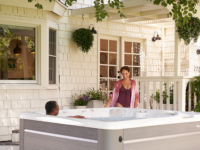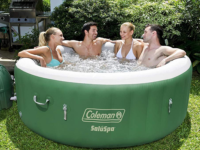Pregnancy is known to bring about plenty of uncomfortable feelings for women. Expecting mothers are continually seeking methods for alleviating some of these discomforting conditions. Hot tubs are known for relieving aches and pain as well as creating feelings of relaxation.
Is a hot tub allowed during pregnancy? This article is going to covet all aspects of using a hot tub during pregnancy. This includes the benefits, disadvantages, health risks, and other information that expecting mothers need to know.
The Quick Answer
To sum it up, it’s dangerous.
The combination of spa pools and pregnant women can become dangerous. It takes ten minutes in a hot tub to raise body temperatures above 102°F. Several research studies have shown that exposure to temperatures of above 102°F can have several harmful effects on the baby. Some of these adverse effects include congenital disabilities and miscarriages.
Pregnant women who do choose to spend time in a hot tub can take several steps to ensure that their baby-to-be remains safe. These specific steps will be covered further down in the article.
For example, expecting mothers should avoid sitting in a jacuzzi for more than ten minutes. After spending ten minutes in the tub, they should remove themselves and wait for their body temperature to cool down.
Pregnant women who used a jacuzzi for extended lengths of time throughout their pregnancy should consult their doctor about methods to detect birth defects.
First Trimester
Hot tubs are likely the most threatening to pregnancy during the first trimester. This danger is due to the fetal parts being made during the first trimester, which is known as organogenesis. The first trimester is the stage in which babies are the most at-risk of developing birth defects.
Employing logical common sense throughout the first trimester is the best course of action. Regardless of the environment, temperatures should never rise above 104°F. Additionally, mothers should not linger in these warm water environments for too long. The equipment should always be maintained, cleaned, and disinfected. Following the previous instructions should ensure a suitable level of safety.

Second Trimester
The Organization of Teratology Information Services (OTIS) states that a body temperature of more than 101°F can create problematic conditions for a pregnant woman. Elevated body temperatures are particularly troublesome during the first trimester of pregnancy.
According to the American College of Obstetricians and Gynecologists (ACOG), overheating caused by sitting in a hot tub should be avoided during pregnancy. The ACOG has stated that expecting mothers should never allow their body temperature to increase above 102.2°F.
Spa pools are generally programmed to maintain temperatures of around 104°F. Additionally, it only takes around ten or twenty minutes to increase body temperature to 102°F or higher.
Third Trimester
Some doctors are likely going to recommend avoiding hot tubs during pregnancy. If there is a safe time to use a spa during pregnancy, it would be during the third trimester.
All safety considerations that were followed during the first and second trimesters should be duplicated for hot tub use in the third trimester. Most importantly, body temperatures of pregnant women should never rise above 102.2°F. Additionally, spa time should be limited to ten minutes or less. Once ten minutes have been reached, exit the spa pool and allow the body to cool down to a moderate level.
Epsom Salt Bath Or Hot Tub While Pregnant
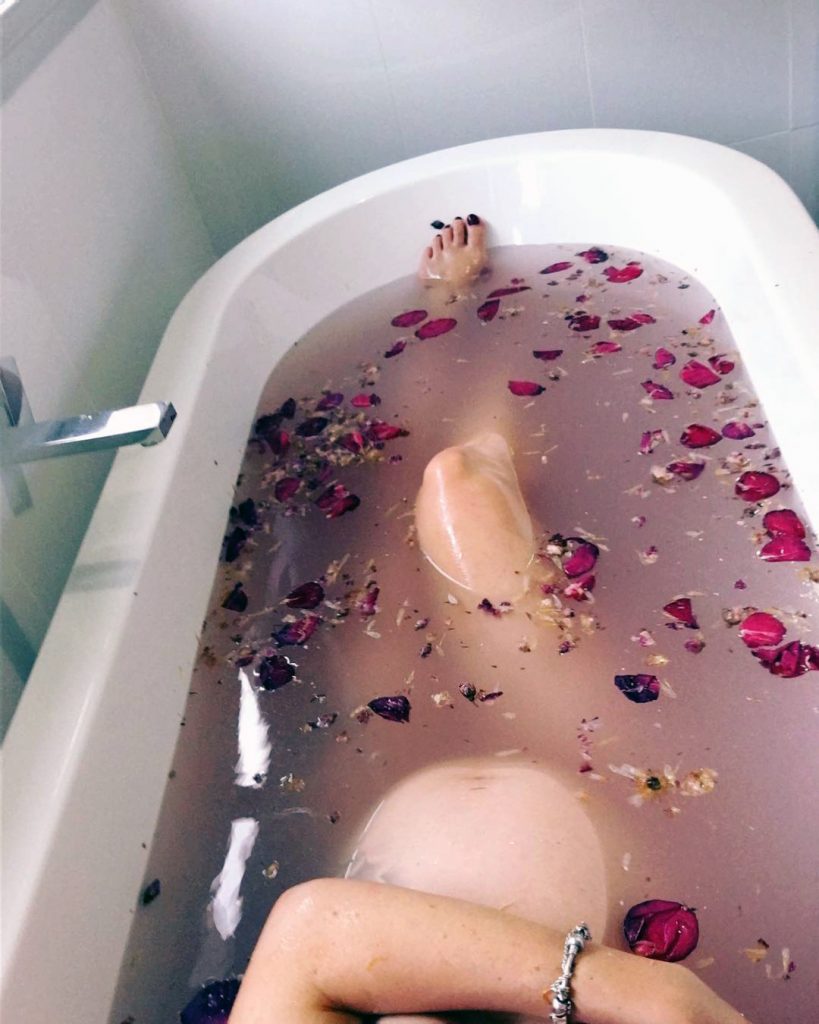
The dangers of exposure to increased temperatures caused by hot tub use during pregnancy have been demonstrated. Many expecting mothers want to use spa pools for their relaxing and soothing effects. The health of the baby should also be the top priority. There is a safer alternative to using a harmful jacuzzi.
Epsom salt is a natural remedy for some of the discomforting conditions that are caused by pregnancy. This product has been used by expecting mothers for hundreds of years.
Epsom salt doesn’t contain sodium chloride, so it isn’t the same thing as the salt used in food products. Epsom salt is a crystallized combination of two minerals, which are magnesium and sulfate.
Here are some of the benefits that come with taking Epsom salt baths during pregnancy:
- Alleviates muscle pain
- Relieves pain from stretching skin
- Assists with digestive issues
- Decreases stress, increases relaxation
- Improves magnesium deficiencies
Safety Tips: How to Use Hot Tub Safely During Pregnancy
For several expecting mothers, relaxing in a jacuzzi sounds like an excellent way to ease muscle pain and soreness related to pregnancy. It is critical to exercise caution when selecting a hot tub for relaxation and discomfort relief. Warm bodies of water can lead to hyperthermia, which means having a high body temperature.
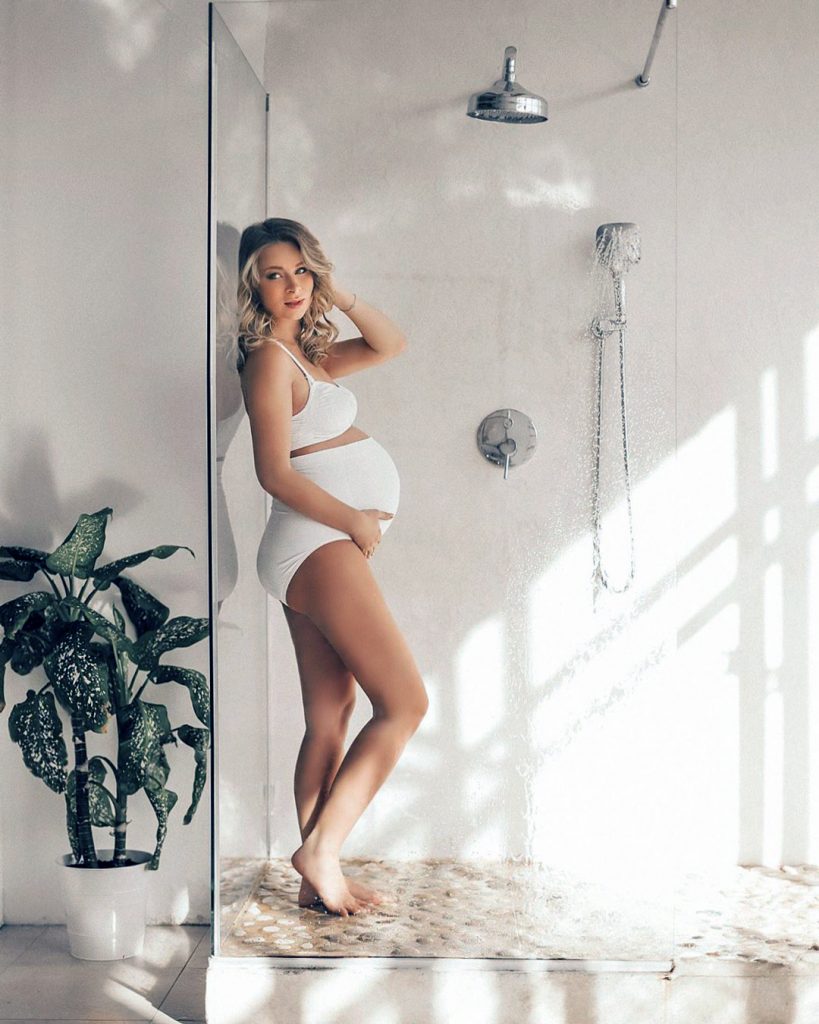
Here are some of the best practices for pregnant women related to using a hot tub that a doctor would likely recommend:
- Ensure that the hot tub maintains a lower than usual water temperature
- Limit exposure to warm water to ten minutes or less
- Check the temperature of the water by using a thermometer
- Check body temperature to protect against overheating
- Be wary of warning signs like discomfort or cessation of sweating
1. Check pH Each Time
The pH level of a hot tub is very important for the overall safety of the environment. This is especially true when pregnant women are using the equipment. Generally, a pH level of seven represents optimally neutral water. Lower pH amounts represent more acidic water, whereas higher amounts represent more basic water.
The pH of the water should be monitored with tests strips or a pH meter. Both of these tools will show how acidic or basic the water level is. Optimal pH levels are in the range of 7.2 and 7.6 ppm.
When a hot tub pH level is outside of the range of around 7.0 ppm, unhealthy and dangerous conditions could be developing in the spa. These unhealthy and dangerous conditions could be bacteria growth, fungal growth, or corrosion.
2. Check Temperature
On some occasions, expecting mothers may need to check the estimated temperature of water without the use of a waterproof thermometer. Signs demonstrating water is approaching high levels can be determined without a thermometer. Assessing water heat without a thermometer will not provide an exact temperature, so pregnant mothers should always have a thermometer to double-check.
Here are two methods that can be used to check water temperature without a thermometer:
- Place the hand slightly above the water. If heat is coming off of the water, it is hot and could harm you. If heat is not felt, then the water is probably safe to enter, or it is not heated at all.
- Place the elbow into the water. This method will allow you to get an instant indication of how hot or cold the water temperature is. Additionally, this method does not risk burning the hand.
3. Use a Separate Thermometer To Double-Check
Not all spa pools are designed the same way. Expecting mothers must understand how to control a hot tub temperature before even thinking about using one. Most modern spa pools will contain a control panel that is used to monitor and maintain the temperature.
On most jacuzzi models, the control panel will be located on the edge of the pool so that users can control the temperature while using the hot tub. In other cases, the control panel may be positioned on a wall or surface nearby.
Once a user understands how to control, monitor, and maintain the hot tub temperature with the control, they must also have a back-up plan. Pregnant women should always double-check the temperature of the hot tub with a thermometer.
Before double-checking the temperature, make sure that the thermometer is working correctly so that an accurate temperature is obtained. Dip the waterproof thermometer into the hot tub and wait a moment to check the temperature.
Hot tub temperatures are commonly around 104°F. At that temperature, it will take between ten and twenty minutes to raise body temperature above 102.2°F. The body temperature of pregnant women should never be above 102.2°F.
4. Other Advice
The last thing that pregnant women want when trying to relax in a hot tub is to feel more anxiety about the possible adverse effects on the baby. Therefore, it is essential to consult the physician or doctor before using a hot tub during pregnancy.
Even before consulting the doctor, pregnant women must understand that extra precautions have to be taken when exposing an unborn child to increased temperatures. These extra precautions are especially necessary during the first trimester.
To avoid the risks of pregnancy complications from using a hot tub, expecting mothers should consider other sources of pain alleviations or relaxation. Some other methods to relieve these discomforts include Epsom salt baths or a simple warm bath.
Body Temperature During Pregnancy
Spending time in a pool of water that is hotter than the temperature of your body will increase your overall temperature. This is true regardless of if your sitting in a bath, hot tub, pool, jacuzzi, hot springs, or even a lake.
Throughout a pregnancy, the body temperature should not increase to levels above 102.2°F. For example, if any person spends more than ten minutes in a pool of water that has a temperature of 104°F, body temperature can rise above 102.2°F.
Avoiding warm bodies of water is particularly critical throughout the first trimester of pregnancy. During this time, significant increases in temperature can lead to congenital disabilities, like brain and spinal cord conditions.
A 2006 research study that was published in Birth Defects Research indicated that minor temperature exposure before the embryo being implanted in the uterus and additional severe temperature exposure throughout the first trimester could lead to multiple birth defects or miscarriage.
An additional 2011 study identified possible risk factor related to pregnancy and jacuzzis, particularly during the first trimester. All expecting mothers should maintain open communication with their doctor before using a hot tub.
Scientific Evidence
There is a considerable amount of research dedicated to the effects of increased temperatures on pregnant women. A majority of the hypotheses related to these studies start with animal studies. Animal studies that show promising results are then suggested for human trials.
In short, most of the clinical research related to hot tubs and pregnancy demonstrate that it is an unsafe practice. High temperatures put pregnant women and their babies at risk for several congenital disabilities, health conditions, and possible miscarriages.
These research studies also describe safety precautions that expecting mothers can take before using a hot tub. The studies have also identified safe temperatures, exposure times, and other considerations that pregnant women should understand before using a spa pool.
In the next section of this article, three critical research studies and their findings will be described. These are peer-reviewed studies that can be trusted by all pregnant women.
1. Maternal Use Of Hot Tub And Major Structural Birth Defects
Prior research on the relationship between jacuzzi use during early stages of pregnancy and birth defects have indicated an increased risk of some congenital disabilities. There has been a lack of research related to the association of hot tub use and certain birth defects.
This particular study included approximately 11,000 new mothers of babies with congenital disabilities and around 7,000 new mothers of babies without birth defects. The study lasted between the years of 1997 and 2005.
The results of the research indicate that expecting women who use jacuzzis more than one time throughout early pregnancy and for extended lengths of time have an increased likelihood of developing specific congenital disabilities, particularly anencephaly and gastroschisis.
2. Risks Of Hyperthermia Associated With Hot Tub Or Spa Use by Pregnant Women
There is a lack of human research studies that examine the association between hot tub use during early pregnancy and specific congenital disabilities or miscarriage. There have been a considerable amount of animal studies completed on this topic. These studies suggest that increased maternal body temperatures in addition to the duration of exposure are critical variables associated with the risk of congenital disabilities and miscarriage.
The findings from this study indicate that the likelihood for spa use to raise maternal body temperature to dangerous levels and thus raise the risk for congenital disabilities or miscarriage is likely.
Women who become aware that they are pregnant should consult their physician and be advised of the safe limitations of heated water exposure. Additionally, these women should understand that hot tub temperatures are variable and will likely not be the same during each use. Therefore, expecting women must constantly monitor water temperatures to maintain a core body temperature of 102.2°F or lower.
3. Review: Hyperthermia And Fever During Pregnancy
Hyperthermia can be defined as an unhealthy or dangerously high body temperature. Episodes of this condition are not uncommon for expecting mothers. The adverse effects of hyperthermia are dependent upon the level of temperature increase, the duration of exposure, and the stage of pregnancy during the exposure.
This study has shown that mild exposure to increased body temperatures during early stages of pregnancy, as well as severe exposure during the later stages, can often lead to miscarriage. Similarly, hyperthermia can lead to the development of various structural and functional birth defects.
The baby’s central nervous system (CNS) is most susceptible to damage from exposure to increased temperatures because this system is very fragile while it is developing during pregnancy. Animal studies have indicated that the most common birth defects are associated with the neural tube, microphthalmia, cataract defects, as well as functional and behavioral conditions.
Several of these birth defects have been seen in human studies associated with fevers during pregnancy or hyperthermia. There is a need for future research concerning conditions of central nervous system function after exposure to increased temperatures. Some of these conditions may include mental retardation, schizophrenia, autism, and cerebral palsy.
4. Other Sources
The three previously described studies are very significant for pregnant women who are considering the use of a hot tub. Several other research studies examined the effects of hot tubs, increased body temperatures, and other conditions associated with pregnancy.
For example, this study examined the suggested limits of time spent in a jacuzzi by pregnant women. This research studied the risks of hyperthermia related to hot tub use by expecting mothers. This article describes the overall health and safety of hot tub use for pregnant women.
There are multiple resources for expecting mothers to read and understand before using a hot tub. Any responsible pregnant women should make their baby’s health their top priority. It is essential that all risks and considerations associated with increased temperatures during pregnancy are understood before using a hot tub.
Risks of Using a Hot Tub During Pregnancy
Expecting mothers in their first trimester should generally avoid warm bodies of water. Even if the time spent is kept to less than ten minutes, it can create a dangerous situation for the baby. Each body is unique, so some women will overheat quicker than others, or faster than they may expect.
For the safety of the pregnancy, hot tubs should be avoided throughout the first three months. Instead of sitting in a jacuzzi, grab a beverage or a book and dip your feet in the water. However, the time that your feet are in the water should still be limited because this will eventually raise your body temperature as well.
Once the first trimester is complete, the doctor should be consulted regarding hot tub usage. Even after the first trimester, pregnant women should not spend more than ten minutes in the tub. Additionally, they should prepare for plenty of time to cool off and reduce body temperature in-between sessions of using the jacuzzi.
Here are a few recommendations regarding risks associated with hot tub usage during pregnancy:
- If the warm water jets are turned on, expecting mothers should sit on the other side of the pool. The opposite side of the pool will have a slightly reduced water temperature.
- A sweaty feeling is an early indication of overheating. Pregnant women that are using the jacuzzi and start feeling sweaty should get out of the tub immediately and reduce their body temperature.
- The chest should be kept above the water level as often as possible. The ideal situation would be only keeping the lower half of the body in the warm water.
- Women who experience any discomfort, like feeling dizzy or nauseous should get out of the tub immediately. Once getting out of the pool, monitor the body condition closely until the temperature is back to normal.
- Pregnant women with a fever should never use a hot tub because it doubly increases your body temperature.
Expecting mothers who are enjoying the hot tub with friends or family should always ask if they’re comfortable with keeping the water temperature low. Decreasing the water temperature slightly will still keep the pool comfortable and warm, but it will considerably reduce the risk of overheating.
1. Hot Tubs and Birth Defects
One of the most critical questions that must be raised regarding hot tubs and pregnancy is if they are related to congenital disabilities. These relaxing pool additions are not always safe for women who are pregnant. Germs can thrive in jacuzzis if they are not kept clean, which makes fungus and bacteria more likely.
Some research has indicated that heated pools should be avoided during the first trimester. One study by National Birth Defects Prevention indicated that mothers who lingered in hot tubs, particularly in the first trimester, were more prone to give birth to babies with defects. Two of the birth defect disorders that were identified in the research were gastroschisis and anencephaly.
Furthermore, the mothers whose infants suffered from these birth defects stated that they spent considerable time in jacuzzis over many months. The researchers surmised that repeated heat exposure can increase the likelihood of birth defects. Additionally, the research report did not mention water temperatures. Thus, some of the women may have spent time in water 100°F or higher, which has already been found to be a dangerous temperature level.
2. Can Hot Tubs Cause Miscarriages?
It has already been shown that hot tub usage during pregnancy can lead to birth defects. Can the same usage lead to miscarriages? One research study indicated that hot tub or whirlpool bath use by pregnant women can make miscarriage more likely.
This particular medical study includes over one-thousand women that experienced miscarriage before twenty weeks of pregnancy. The researchers collected information related to the hot tub or whirlpool bath usage by conducting interviews during the early stages of the pregnancy.
The study suggests that the underlying cause for the relation between spa use and the risk of miscarriage is a rise in body temperature. Therefore, the researchers suggest that embryos and very young fetuses are more susceptible to the effects of increased body temperatures than their pregnant mothers.
Overall, the research did observe a correlation between increasing body temperature and risk of miscarriage. Further research is required to determine additional risks of miscarriage associated with spa pool use during pregnancy.
3. Exposure to Dangerously High Temperature
Numerous studies indicate that early pregnancy exposure to increased temperatures, particularly in hot tubs, can cause an increased risk of congenital disabilities or miscarriage. These risks are particularly relevant when the water temperature rises to 104°F.
At 104°F, it only takes between ten and twenty minutes for body temperatures to increase above 102.2°F. Research has demonstrated that body temperatures above 102.2°F put the baby at-risk of the previously stated congenital disabilities or a possible miscarriage.
4. Germs
Germs are certainly something to consider for pregnant women that want to use a hot tub. A hot tub is a warm, compact pool of water. This type of environment is an ideal setting for dangerous bacteria to accumulate. However, consistent maintenance and regular monitoring can help guarantee the water is safe to be used by pregnant women.
Hot tub owners should ensure that they are using the correct disinfectant and test the water with pool water strips. Safe levels of chlorine should be in the range of two and four parts per million (ppm). When using bromine, the levels should be in the range of four and six ppm. Furthermore, the pH levels should in the range of 7.2 and 7.8.
The following are some common questions that should be asked before safely using a hot tub:
- What amount of people generally use it?
- How often is the water treated and replaced?
- Is the equipment maintained by an experienced technician?
- Is the water testing regularly using the correct equipment?
- How often is the filter replaced?
- What temperature is the water maintained at?
Benefits of Using Spa During Pregnancy
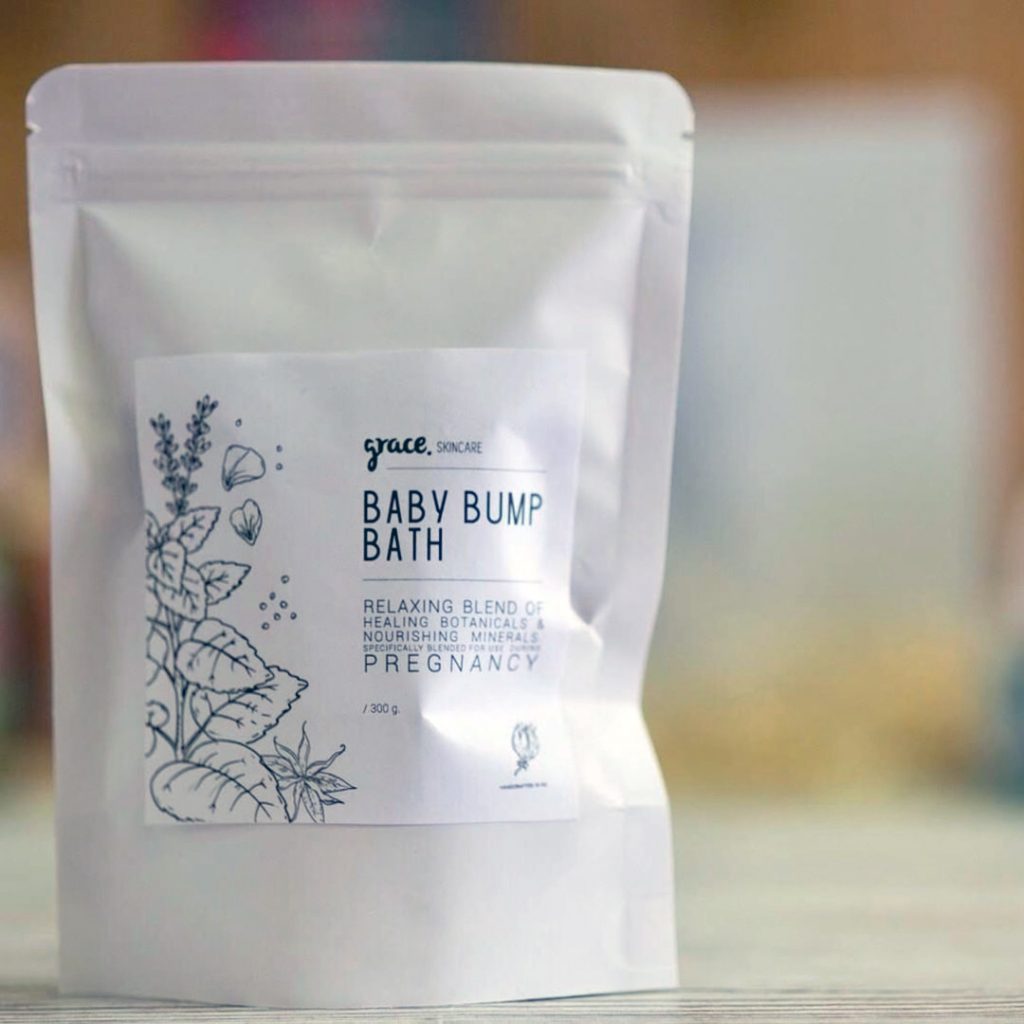
Although pregnant women don’t need to change to only taking cold showers, they should probably avoid hot tub use. Expecting mothers are at an increased risk for dehydration, dizziness, and reduced blood pressure. Those symptoms can be compounded by exposure to increased heat.
Any situation that can increase an expecting mother’s body temperature to above 102.2°F is potentially harmful to the child, especially in the early stages of pregnancy. Thorough research has indicated that exposure to high temperatures can increase a baby’s risk of developing several birth defects or miscarriage.
Here are some of the benefits that a hot tub can provide, which many pregnant women desire:
- Soothing aches and pains
- Increasing relaxation
- Relieving pain from stretching skin
However, in the case of using hot tubs during pregnancy, it seems that the disadvantages outweigh the possible benefits. Therefore, expecting mothers should avoid spa pools and try a warm bath or an Epsom salt bath.
Conclusion
Hot tubs and jacuzzis are amazing home accessories. They can also provide several mental and physical health benefits for an average person. However, the temperature conditions of a hot tub can be hazardous for pregnant women.
Expecting mothers should avoid using a jacuzzi entirely during the first trimester or if they have a fever. Hot tub use should probably be avoided throughout the entire pregnancy. However, women in the second or third trimesters should consult their doctor before using a spa pool.
Once the doctor has approved to use a hot tub, precautions and understanding of temperature limits are essential to safe jacuzzi usage. Pregnant women should closely monitor their body temperature, the temperature of the hot tub, and their general feelings of well-being. Alternative options for relaxation and pain alleviation are warm baths and Epsom salt baths, which tend to be much safer than hot tubs.
FAQ
🤱 Can using a hot tub while pregnant hurt the baby?
It’s dangerous. It takes 10 minutes in a hot tub to raise body temperatures above 102°F. That can have several harmful effects on a baby. Some of these adverse effects include congenital disabilities and miscarriages. That is why it is not recommended.
👼How to Use a Hot Tub Safely During Pregnancy?
Here are some of the best practices for pregnant women:
- Ensure that the hot tub maintains a lower than usual water temperature
- Limit exposure to warm water to ten minutes or less
- Check the temperature of the water by using a thermometer
- Check body temperature to protect against overheating
- Be wary of warning signs like discomfort or cessation of sweating
👶 Can Hot Tubs Cause Miscarriages?
Overall, the research did observe a correlation between increasing body temperature and the risk of miscarriage. Further research is required to determine additional risks of miscarriage associated using a spa during pregnancy.
🤰 What are the benefits of Using a Hot Tub During Pregnancy?
Here are some of the benefits that a hot tub can provide, which will help many pregnant women:
- Soothes aches and pains
- Increasing relaxation
- Relieves pain from stretching skin

